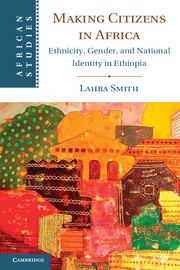Book contents
- Frontmatter
- Contents
- Maps and Tables
- Acknowledgments
- Abbreviations
- Glossary
- Maps
- Introduction
- The Challenge
- The Response
- Appendix I Methodology
- Appendix II Questionnaire for Parents and Community Members (English)
- Appendix III Questionnaire for School Directors
- Appendix IV Questionnaire for Teachers
- Bibliography
- Index
Introduction
Published online by Cambridge University Press: 05 May 2013
- Frontmatter
- Contents
- Maps and Tables
- Acknowledgments
- Abbreviations
- Glossary
- Maps
- Introduction
- The Challenge
- The Response
- Appendix I Methodology
- Appendix II Questionnaire for Parents and Community Members (English)
- Appendix III Questionnaire for School Directors
- Appendix IV Questionnaire for Teachers
- Bibliography
- Index
Summary
In the Shola neighborhood of the Ethiopian capital, Addis Ababa, there is a bustling local market. Just a few decades ago, Shola formed the outskirts of town, and much of its surrounding areas were open fields where children could play soccer and follow well-worn paths to school each morning. Now there are no fields for miles, and the edges of the city have moved out in all directions to new residential developments. Shola is now part of downtown Addis Ababa. It is also home to pockets of distinct ethnic communities, as are many of Addis Ababa’s neighborhoods. I lived in Shola for a year, and I was repeatedly told that “a lot of Sudanese live in Shola.” I did indeed observe many young men and some families who bore evidence of phenotypical difference from the Amhara, for instance, walking on the road near my home. In addition to crude phenotype differences such as skin color and stature, there were other cultural cues; for example, the women did not wear the natalas or hijabs more common among the Orthodox or Muslim women of my neighborhood.
Surely some of these individuals were Sudanese citizens – refugees, students, and residents – fleeing war in their country or seeking employment or educational opportunities in Ethiopia. In fact, I personally had a Sudanese friend who lived near Shola. He was a refugee and a student who struggled to make a living as a tutor to children of middle-class Ethiopian families interested in improving their children’s English-language skills. It was impossible, however, for these Sudanese citizens to be visibly distinguished from Ethiopian citizens of similar ethnic groups. Short of stopping them on the street and asking what their citizenship was, I could not conclusively prove what proportion were Anywaa, Nuer, or other ethnic groups, probably from the western region of Gambella, and what proportion were Sudanese nationals or refugees.
- Type
- Chapter
- Information
- Making Citizens in AfricaEthnicity, Gender, and National Identity in Ethiopia, pp. 1 - 16Publisher: Cambridge University PressPrint publication year: 2013



